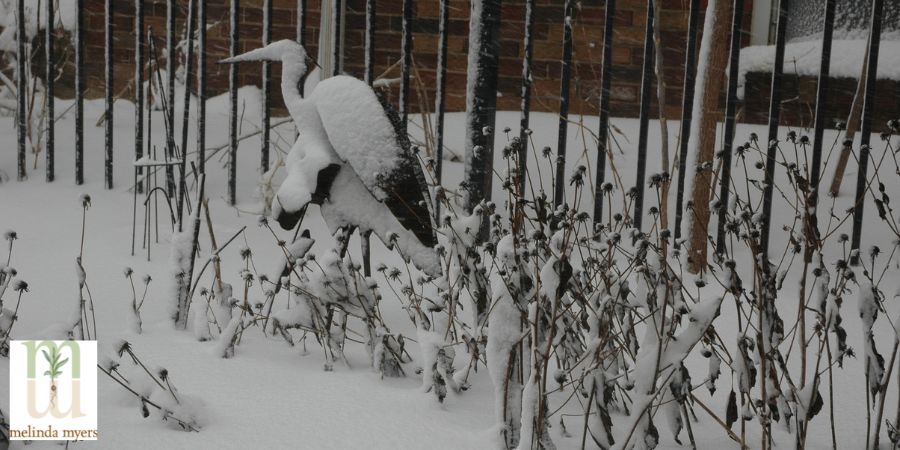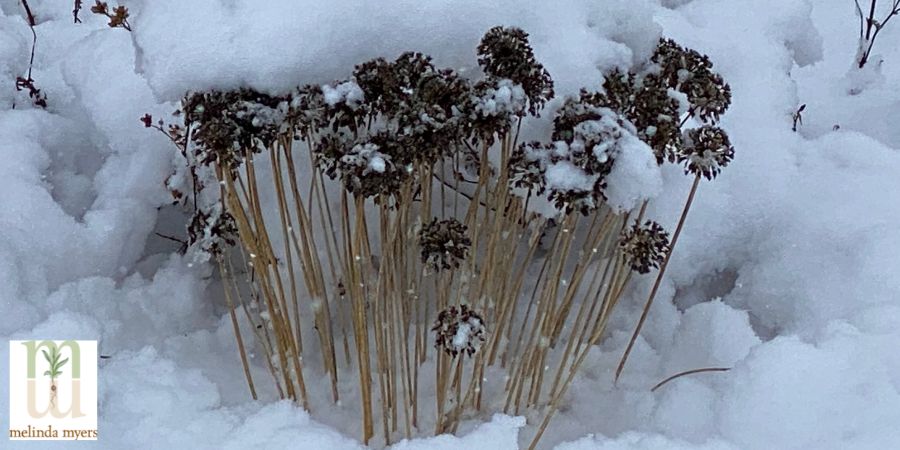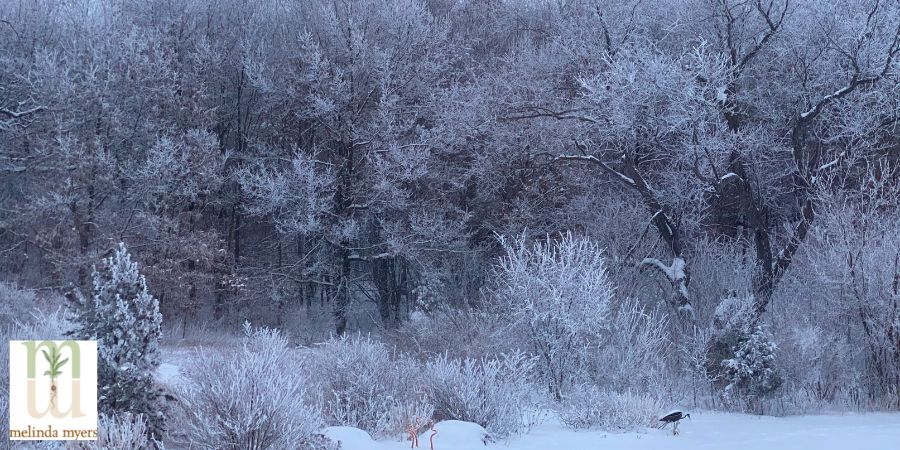Perennials to Keep Standing through Winter
- horticulturist and gardening expertSeptember 13, 2022
Perennials to Keep Standing through Winter
As fall color begins to fade, you may be contemplating a bit of garden clean-up. For some gardeners, this has meant cutting every perennial to the ground before winter. Recently more and more gardeners are realizing the many benefits and beauty of leaving healthy perennials stand for winter.
Many perennials provide motion, form, and texture to the winter garden. This subtle winter beauty may not be as colorful as your summer garden, but it adds interest to what may be an otherwise drab winter landscape.

Coneflower seed heads
The seed heads of many perennials like coneflower, rudbeckia, liatris, and bee balm attract seed-eating songbirds like finches, sparrows, chickadees, juncos, and jays to the winter garden. These welcome visitors add color and motion, entertaining us throughout the winter. If not for the birds, winter would be much longer and drearier in my part of the country.
If this hasn’t convinced you, consider leaving perennials standing for winter to support beneficial insects that pollinate our plants, help manage insect pests, and more. A variety of pollinators and other beneficial insects overwinter in or near the stems of perennials.
This change of habit may have you wondering what perennials you should leave standing and which ones should be cut down before winter. Here are a few tips to help you with fall cleanup.
What Perennials to Cut Back in Fall
Start by removing any diseased and insect pest-infested perennials. This reduces the risk of these problems occurring in next year’s garden. Cut these perennials back to several inches above the ground. Discard don’t compost the pest-infested plant material since most of our compost piles do not heat up sufficiently to kill the insect pests and diseases. Contact your local municipality for disposal options for this type of plant debris.
Hostas are a favorite shade perennial. Removing the leaves once the fall color fades and leaves die reduces the risk of leaf nematodes overwintering in the crown of the plants. It also removes the winter homes for slug eggs. The last thing you need is more hosta-eating slugs living under your plants. Do leave the seed heads of late blooming hostas intact if possible. The juncos will enjoy dining on the seeds, and you will enjoy these visitors to the garden.

Allium seed heads
Enjoy the winter foliage of evergreen and semi-evergreen perennials by leaving them for winter. Some perennials like yarrow (Achillea), Shasta daisy (Leucanthemum x superbum), and globe thistle (Echinops) form a rosette of leaves at their base in the fall. Avoid disturbing this new growth if you decide to cut back the bare stems of these plants.
What Perennials to Keep Standing for Winter
I leave all my healthy perennials standing for winter. I live in the north and find they add interest to my winter landscape as well as support birds and beneficial insects. Thirty years ago, my neighbors were puzzled by my winter garden. After a few years, they began to see the many benefits, and some started doing the same.
You may not share my idea of winter beauty and decide to remove anything that doesn’t support birds and beneficial insects while providing the beauty you desire. Here are some perennials that are best to leave standing for winter.
Leave borderline hardy perennials intact for winter to improve winter survival. The stems help capture snow, the best winter mulch, and the leaf-covered stems provide added insulation for the crown of the plant.
Some of you may be wondering if native plants should be cut back in the fall. No, leave these plants standing in the garden for winter. Native plants evolved with native insects, birds, and wildlife and most provide winter homes and food for them. Some of the more common native plants you may be growing include purple coneflowers, liatris, rudbeckias, sunflowers, asters, goldenrod, yucca, and Joe Pye weed.
The same applies to native and ornamental grasses. Some provide food for birds while others provide shelter for beneficial insects. All of them add beauty and motion to the winter garden.
When and How to Cut Perennials Back
Wait for several hard frosts when cutting perennials back in the fall. This ensures the plant has stored all the energy it has produced into the roots for healthy growth next spring. Make the cut 2 to 3 inches above the ground. This avoids damage to the crown of the plant.
Wait until spring temperatures hover in the 50s for several days before cutting back perennials that were left standing for winter. This allows overwintering insects a chance to leave their winter homes. If you can’t wait that long, stack the trimmings in an out-of-the-way location. This allows any remaining insects time to exit. Then mulch or compost the debris later in summer.
In spring, cut stems back to varying heights between 8 to 24 inches. These dead stems provide nesting cavities for bees. The new growth will mask these stems. The following spring, the old stems from the previous year naturally decompose.
Use sharp bypass pruners to make a clean cut through the stem. Hand and power hedge clippers and weed whips with stiff plastic blades make cutting back large plantings and ornamental grasses more efficient. Bind grasses with bungee cords before cutting them back to make clean-up much easier.
Enjoy the fall season and the extra time you gain by leaving healthy perennials stand for winter. When spring arrives, you will be ready to get into the garden, do a bit of cleaning up and look for signs of spring.

